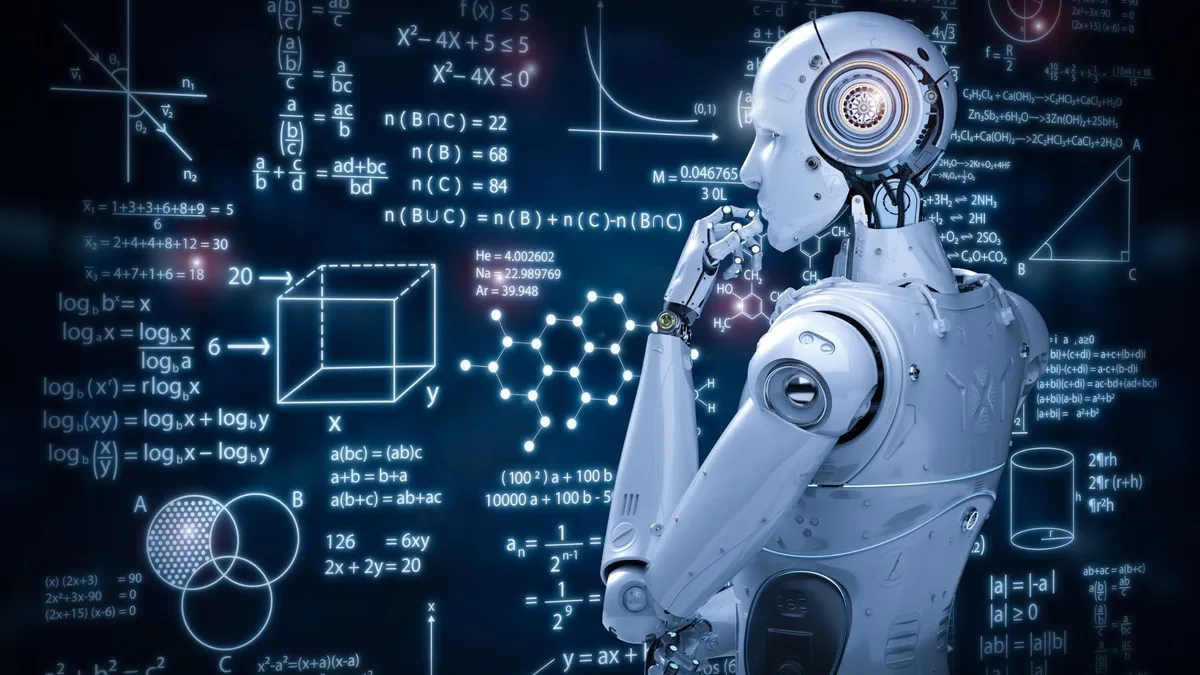Artificial Intelligence
AI shrinks 100,000-equation quantum problem to just four equations

An international collaboration of physicists deployed artificial intelligence (AI) to compress a highly complex quantum problem which comprised over 100,000 equations, into one that needed solving only four, Phys.org has reported. The compression did not change the accuracy of the outcome and could help revolutionize investigation systems in the field of quantum physics.
The research work was primarily carried out by Domenico Di Sante, an assistant professor at the University of Bologna in Italy, focused on the Hubbard model that tries to explain the transition between conducting and insulating systems.
The Hubbard Model
First proposed in 1963, the Hubbard Model tries to explain the behavior of electrons when placed on a gridlike lattice. Under the model, when two electrons occupy the same site on the lattice, they interact, and their fates become quantum mechanically entangled, even if they are placed far apart.
Studying electron behavior helps physicists explain the different phases of matter. However, since the electrons are quantum mechanically entangled, physicists must consider all the electrons together in their calculations. This makes calculations a complex mathematically hurdle that becomes exponentially harder the larger the number of electrons being considered.
To simplify the task, physicists used a mathematical apparatus called a renormalization group, which can help keep track of all electron interactions. However, a renormalization group can end up containing anywhere between tens of thousands to millions of equations that need solving.
Deploying AI to simplify
Di Sante and his colleagues wondered if AI could be used to simplify the problem at hand. They turned to neural networks, where the software first created connections between the renormalization group and then tweaked the strength of those connections to find a small set of equations that generated the same solution as the original group, Phys.org said in its report.
/2022/09/27/image/jpeg/EtF3ILI0ZKf0rE8BS0uJYSJgeF10gYa8L3t1BiBG.jpg)
The program required a lot of computational power to understand the complexity of the Hubbard model. It ran for weeks, but its final output summarized the Hubbard model in just four equations.
“It’s essentially a machine that has the power to discover hidden patterns,” Di Sante told Phys.org. “When we saw the result, we said, ‘Wow, this is more than what we expected.’ We were really able to capture the relevant physics.”
Now that the program has been trained to look for such patterns, it can be adapted to look at other similar problems without having to start from scratch. If the program can be scaled for other problems, scientists are keen to use it to design materials that offer superconductivity – where electrons flow through a material without any resistance.
Additionally, Di Sante and his colleagues are now investigating how machine learning worked in this instance to provide insights into how it works and what physicists have missed out on.
The research findings were published last week in the journal Physical Review Letters.
Abstract
We perform a data-driven dimensionality reduction of the scale-dependent four-point vertex function characterizing the functional renormalization group (FRG) flow for the widely studied two-dimensional t−t′ Hubbard model on the square lattice. We demonstrate that a deep learning architecture based on a neural ordinary differential equation solver in a low-dimensional latent space efficiently learns the FRG dynamics that delineate the various magnetic and d-wave superconducting regimes of the Hubbard model. We further present a dynamic mode decomposition analysis that confirms that a small number of modes are indeed sufficient to capture the FRG dynamics. Our Letter demonstrates the possibility of using artificial intelligence to extract compact representations of the four-point vertex functions for correlated electrons, a goal of utmost importance for the success of cutting-edge quantum field theoretical methods for tackling the many-electron problem.
Source: https://interestingengineering.com/innovation/ai-shrinks-quantum-problem-to-four-equations

